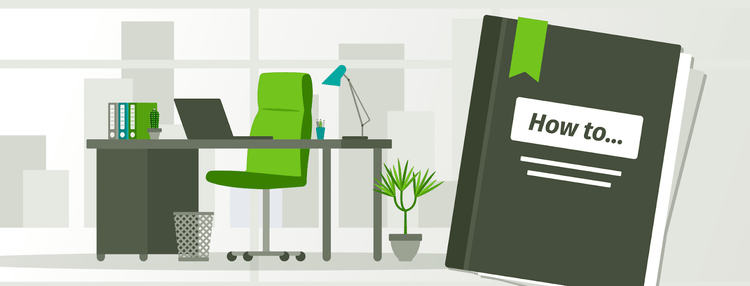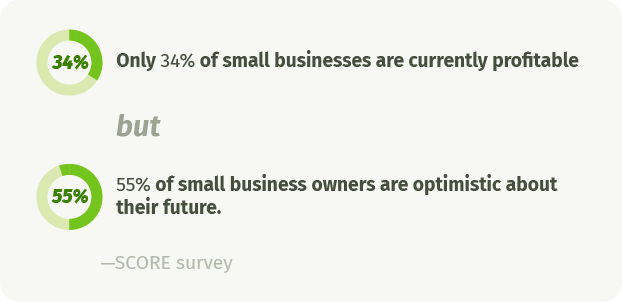Returning to the Workplace: Guide to Reopening Your Business After COVID-19

We understand if you feel like you and your organization have been through the wringer since COVID-19 struck. Who wouldn’t? Companies everywhere have faced one unprecedented challenge after another, while society coped with countless disruptions and an enormous toll in human lives. Now, as vaccines offer hope that the worst will soon be over, organizations that temporarily adopted remote work face their next big challenge: reopening their business after COVID-19 and returning workers to the workplace.
In this article, you’ll find expert reopening advice from Cassie Whitlock, director of HR at BambooHR, followed by a list of helpful free resources.
What to Expect When Reopening
At first, you might think reopening a business after COVID-19 is as simple as flipping a switch: pick a date when everything will go back to normal and then tell everyone to show up at the office and conduct business as usual. Unfortunately, it isn’t that easy. As the pandemic winds down, there will continue to be many health matters to consider and crucial business decisions to be made.
Questions and Answers About Reopening Your Business After COVID-19
To help you identify and manage issues you’ll need to address when reopening your business after COVID-19, we spoke with Cassie Whitlock. Below you’ll find her answers to our questions, followed by a list of resources you can turn to for more help.

A lot has changed over the course of the pandemic. How have your plans for reopening the BambooHR offices evolved since we first shifted to working from home last spring?
CASSIE: Initially, the focus was on the general steps necessary to return to the office. Now, we recognize the bigger opportunity of intentionally defining office and remote work and how to enable success under a dual-environment model. While not all businesses have the options of remote work, we can use this opportunity to focus on communication, collaboration, and further enabling employee success. At BambooHR, we’re defining our dual-environment success strategy and outlining a phased, team-based approach of returning to the office.
Is the process of reopening a business after COVID-19 different for small and medium-sized businesses than it is for larger organizations? What unique challenges do SMBs face?
CASSIE: Yes, there are differences based on company size, but there are also unique needs based on team function and potentially individual needs. With fewer employees, SMBs may have an easier transition in some ways, but at the same time they have fewer people and resources available if they discover gaps in their plan or something unexpected happens. This requires better planning with more communication. To ensure your plan is successful, you may consider a dry run to identify helpful adjustments.

Link: SCORE survey
How should a company decide when it’s the right time for returning everyone to the workplace after COVID-19? And should everyone who’s returning come at the same time?
CASSIE: There’s no one-size-fits-all answer. Deciding on the right time should include evaluating three key business aspects:
- First, the impact on business outcomes with special consideration for unique or seasonal timing. Consider factors of workload cadences, dependencies, and up-stream/down-stream impacts.
- Second, resource limits. For example, it would be impossible for my IT team to onboard all 700 of our employees in one day. This means it will likely be difficult to bring back all 700 employees in one day. There will be unplanned needs for resources.
- And third, individual readiness. Depending on the status of the pandemic, individual employees may have personal concerns or issues. Make sure you stay in tune with employee needs and communicate your transition plans early. Leave time for employees to give feedback or share personal constraints.
With the widely seen success of working from home during the pandemic, will more employers and employees embrace it in the future? What are the pros and cons of more employees working from home?
CASSIE: The question of embracing remote work really boils down to maintaining or elevating success. Just like with a business product, if it takes more money to create a product than you can sell it for, you won’t remain viable. This means leadership, teams, and individuals each need to do their part for remote work to sufficiently benefit the business.
Remote work can benefit focused work but may inhibit collaborative work. Company culture and employee engagement will continue to be of prime concern with remote work post COVID-19. Intention and innovation are essential for culture and more so under remote work conditions.
Will your organization be ready to weather the next crisis?
How can companies prepare their employees for returning to the workplace after COVID-19?
CASSIE: Start with early communication, gather feedback, and leave room for iterations prior to launching your plan. My favorite idea is a journey map: a one-page document that helps each employee know what steps they need to take as they return to the office. Simple, easy to follow, with a clear outcome of energized, focused work.
What should an employer include when developing a comprehensive workplace plan for dealing with COVID-19?
CASSIE: The U.S. Centers for Disease Control and Prevention (CDC) is a prime resource when you’re setting up or revisiting your COVID-19 policies. Your plan should include:
- Employee education
- Office hygiene practices
- Facility evaluation and maintenance
- Screening processes
- Testing and reporting
- Contact tracing
To promote workplace safety, what role should testing and screening play in reopening a business after COVID-19?
CASSIE: Testing requirements really depend on the unique factors of your business. At a minimum, employees should complete a daily screening. You can get creative about how this is done, but it’s your best proactive measure for minimizing or eliminating potential workplace COVID-19 exposures.
Many leaders and HR professionals are currently discussing how we can influence pandemic-related employee choices and behaviors off the clock. This is a tricky area, but in all situations, employee education can be helpful. Make sure your employees have access to guidance and information about how to limit their COVID-19 exposure.
What about visitors to the workplace? What should employers consider as they decide whether visitors will be permitted and what safety protocols they must follow?
CASSIE: The company has the responsibility to provide safe working conditions for its employees and general protection and safety for visitors and patrons. With that in mind, aligning safety practices for both groups simplifies matters and creates self-sustaining momentum. Communicate early and often so everyone knows what to expect.
Have you seen all the cool stuff BambooHR can do for you?
How do you expect employees’ mental and emotional health needs to change as they return to the workplace? What can employers do to meet these needs?
CASSIE: Getting back to “normal” post COVID-19, or just having a consistent workplace routine in the interim, can minimize stress and distraction. Emotional and mental health will continue to be an important lens of employee wellbeing. Employee assistance programs will continue to be important in benefits offerings, but we can also be more creative about supporting emotional and mental health. Start by talking with employees to understand their needs.
How should employers decide when and how to resume business travel?
CASSIE: Decisions about resuming business travel are another issue that doesn’t have a one-size-fits-all answer. Each organization can make a good decision by evaluating travel using the same three factors I recommended for deciding when to have employees return to the workplace:
What if an employee isn’t comfortable returning to the workplace after COVID-19? Or what if an employee refuses to comply with company requests to be tested or vaccinated?
CASSIE: There are ongoing regulatory changes that will influence what employers can do here, but the foundational principle will likely stay the same: generally speaking, an employer can prohibit an employee from being at the worksite if they pose a threat to safety or health or otherwise can not meet policy requirements.
- Impact on business outcomes
- Resource limits
- Individual employees’ readiness
An employee can be terminated for lack of compliance with company policies…but should an employee be terminated for refusing to be tested or vaccinated? That is a tough question to answer. You should consult with legal counsel in determining how your organization will address this.
How can organizations avoid common mistakes in reopening their business post COVID-19?
CASSIE: I don’t think it’s realistic to expect to have a flawless plan. Instead, we should focus our energy on building a solid, comprehensive plan and then incorporate a back-up plan. Use your business network to enhance your plan: your industry peers are grappling with the same issues, and you can work together to effectively address health and safety as you reopen your work site.
Prepare Now for a Brighter Future
In addition to Cassie’s advice, here are a couple of additional points to keep in mind as you work to develop your post COVID-19 reopening plan:
- Every organization is different. This article provides important information that most organizations can benefit from, but you may face additional challenges that are unique to your circumstances. As a foundational part of your plan, commit time and resources to identifying these unique challenges and developing effective strategies to overcome them.
- COVID-19 is a moving target. Conditions surrounding the pandemic continue to evolve. Chances are your plan will need to evolve too. Even when conditions improve, continue to seek the most current information about pandemic requirements and recommendations from the CDC and your local and state health departments.
As you develop and implement your plans to move forward, your organization may well find that it has changed forever—but that’s not necessarily a bad thing. Solutions and innovations that COVID-19 forced you to create may leave your firm stronger and better positioned to compete in the post COVID-19 business environment.
Having a sound, comprehensive plan in place for reopening your business after COVID-19 and resuming normal activities will not only help ensure your organization’s future success, it will help leaders and employees move forward with renewed peace of mind. After everything we have all been through during the pandemic, regaining a sense of inner peace may be the most coveted benefit of all.
Helpful Free Resources for Reopening Your Business After COVID-19
BambooHR: What Post COVID-19 Will Mean for HR Departments
An in-depth look at expected changes affecting benefits, hiring, company culture, and more.
CDC: Resuming Business Toolkit
Includes an exhaustive checklist for preventing and reducing virus transmission, continuing healthy business operations, and maintaining a healthy work environment. Also features a worker protection tool that helps you choose the most appropriate protective measures for your workplace.
OSHA: Preparing Workplaces for COVID-19
Discusses steps employers can take to protect all workers, then explains how to classify the risk level(s) of your employees and take additional protective measures that are tailored to their needs.
CDC: COVID-19 FAQs for Workplaces and Businesses
How can you reduce the spread of disease in your workplace? What should you do if an employee is diagnosed with COVID-19? How do you know if your business is considered critical? Find simple, straightforward answers to many common COVID-19 questions facing businesses.
Faegre Drinker: Question & Answer Employer Guide: Return to Work in the Time of COVID-19
Answers dozens of questions that employers should keep in mind to help ensure a smooth reopening process, including thorny legal issues that require careful attention.
Mom always said we should have studied law or medicine, but we didn’t listen. So, it’s important to tell you that although BambooHR always strives to provide accurate information, nothing in this article constitutes legal or medical advice. For that, seek qualified professionals (who undoubtedly made their mothers proud).